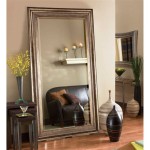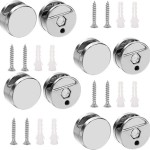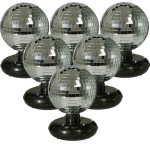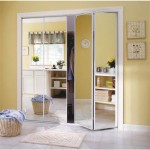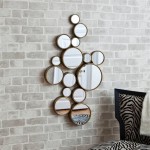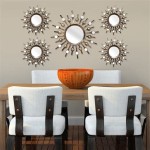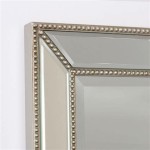How to Install One-Way Mirror Tint
One-way mirror tint, also known as reflective window film, offers privacy during daylight hours by creating a mirror-like appearance on the exterior. This effect allows for visibility from the inside while obstructing the view from the outside. However, this effect reverses at night when interior lights are on. Proper installation is crucial for maximizing the film's effectiveness and longevity. This article outlines the necessary steps for a successful installation.
Gathering the Necessary Tools and Materials: Before beginning the installation process, gather all required tools and materials. This preparation will streamline the process and minimize potential interruptions. Required items include the one-way mirror tint film, a sharp utility knife or razor blade, a spray bottle filled with a soapy water solution (a few drops of dish soap per liter of water), a squeegee, a measuring tape, a clean, lint-free cloth, and a heat gun or hair dryer.
Preparing the Window Surface: Thoroughly cleaning the window surface is essential for proper adhesion of the film. Any dirt, dust, or debris can create air bubbles or imperfections, affecting both the appearance and performance of the tint. Wash the window with the soapy water solution and the clean cloth. Pay particular attention to the corners and edges, ensuring they are free of any particles. After washing, rinse the window with clean water and dry it completely using a lint-free cloth.
Measuring and Cutting the Film: Accurate measurement is crucial for a professional-looking finish. Measure the width and height of the window precisely. Add approximately one inch to both measurements to allow for trimming and adjustments. Using the utility knife or razor blade, carefully cut the film to the measured dimensions on a clean, flat surface. Ensure the blade is sharp to prevent tearing or jagged edges.
Applying the Soapy Water Solution: The soapy water solution acts as a lubricant, allowing for repositioning of the film during installation. Generously spray the window surface with the solution, ensuring complete coverage. This step is critical for preventing the film from sticking prematurely and allowing for adjustments.
Peeling and Positioning the Film: Carefully peel the backing layer from the film. This can sometimes be challenging, and it may be helpful to start at a corner and peel slowly. While peeling, avoid touching the adhesive side of the film as much as possible. Once the backing is removed, position the film on the wet window surface. The soapy water allows for some movement, enabling precise placement.
Squeegeeing Out the Water and Air Bubbles: Using the squeegee, firmly and evenly push the soapy water and any trapped air bubbles out from under the film. Start from the center and work your way outwards, applying consistent pressure. Overlap each squeegee stroke to ensure complete removal of water and air. This step is crucial for achieving a smooth, bubble-free finish.
Trimming Excess Film: Once the film is positioned and the water is removed, carefully trim the excess film using the utility knife or razor blade. Run the blade along the edge of the window frame, using the frame as a guide. This creates a clean, professional look and ensures the film edges are properly sealed.
Heat Shrinking (Optional): For curved or contoured windows, a heat gun or hair dryer may be necessary to shrink the film and conform it to the window's shape. Hold the heat gun or hair dryer a few inches away from the film and move it back and forth, applying heat evenly. Be careful not to overheat the film, as this can cause damage. Use caution when working with heat tools.
Final Inspection and Cleaning: After the film has cooled and dried completely, inspect the installation for any remaining air bubbles or imperfections. If necessary, carefully use the squeegee to remove any small bubbles. Finally, clean the window surface with a clean, lint-free cloth and the soapy water solution to remove any remaining residue.
Important Considerations: The effectiveness of one-way mirror tint is dependent on lighting conditions. The mirroring effect is most prominent during daylight hours when the exterior is brighter than the interior. At night, with interior lights on, the effect reverses, allowing visibility from the outside. Additionally, the angle of view also affects the mirroring effect. Extreme angles may compromise privacy. Carefully consider these factors when deciding on the placement and application of one-way mirror tint.
Safety Precautions: Always exercise caution when working with sharp tools like utility knives and razor blades. Wear appropriate safety gloves to protect your hands. When using a heat gun or hair dryer, follow the manufacturer's instructions and take necessary precautions to prevent burns or fire hazards. Proper ventilation is also important when working with adhesives and heat tools.

Easy Ways To Make A One Sided Mirror With Pictures Wikihow

The Ultimate Guide To One Way Privacy Window

Does One Way Mirror Tint Work After Dark Ap Tinting

Mirror Silver Privacy One Way Pro Window Tinting Sticky Back Tint

One Way Mirror Glass Vs In Denver Scottish Window Tinting

Privacy Window How It Looks Day Night Mirror Tint Effect

What Is One Way Mirror Window Co

One Way Mirror With Nighttime Vision 5 Window And More Decorative Privacy Solar

Does One Way Mirror Tint Work After Dark Ap Tinting

Ez One Way Mirror Static Cling Window World

